The Canon C300 mark II is the latest addition to Canon’s Cinema EOS line of professional digital cinematography cameras. The Canon EOS C300 Mark II Cinema is a film camera intended for cinematography, documentaries, commercials and all kinds of events.
Giving you the newest tech available and having some nifty upgrades that will make your workflow easier and video recording looking even better. It offers an EF Mount that will provide you with the opportunity for quicker autofocusing that will be more accurate and more usable in smaller teams.
Canon’s Log 3 Gamma supports 14 stops of dynamic range. While not a full upgrade from its predecessor, the c300 mark ii has a lot to offer for those that were previously considering buying their own camera.
Many improvements have been done under-the-hood, while some of the features that made the original C300 great are still present in this new model.
A Review of the C300 Mark II
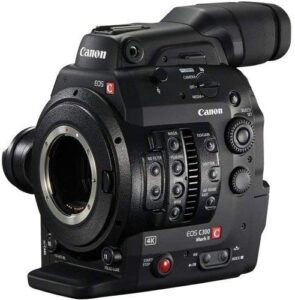
About the C300 Mark II
Predecessors of the C300 have become very popular since their release, being praised for their outstanding image quality, internal codec, and form factor. Despite the praise they’ve received, there were some things that could have been improved upon.
A major drawback of the original c300 was its lack of an external output which would have allowed shooters to send uncompressed video with timecode directly to an external recorder via SDI.
Another common complaint with the first-generation camera was its difficulty in operating one-handed. The display screen didn’t tilt or rotate out of the box so zooming was not possible nor focusing if you wanted to operate wirelessly without a second person assisting you with focus pulling.
The new model is now equipped with built-in wireless functionality as well as a fully adjustable screen. Another user-friendly feature is the addition of a joystick to control focus, which should make it easier for one-person shoots.
What’s New In The C300 Mark II
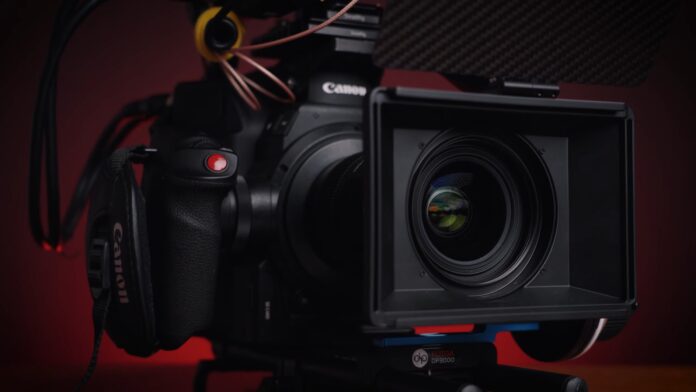
Another big update for this new model is its internal 4K RAW output via single 3G/6G SDI or HDMI. This allows for full-quality 4K at up to 60 fps without having to worry about an external recorder being expensive and cumbersome to attach.
The C300 Mark II features 12 stops of latitude, allowing you to achieve rich colors in both day and night shots that are incredibly accurate whether you’re using Canon Log2 or the newer Canon Log3 gamma curves.
The camera package includes EF mount lenses as well as PL mount lenses with support for interchangeable mounts during production so you don’t have to worry about switching lenses during a shoot.
This camera is also capable of DCI 4K at up to 60 fps, Ultra HD at up to 120 fps, full HD at up to 180 fps, and sub-sampling of UHD 4:2:2 footage for getting the best possible image quality even if bandwidth isn’t quite enough for uncompressed video.
An easy-to-use, compact design makes this camera ideal for both people that are still learning as well as professional videographers on set.
There are so many amazing things about this camera, but there’s definitely a lot of confusion surrounding it due to how much technology Canon has jammed into their latest creation.
To help understand some of the features included in the C300 mark II, I have created a list of pros and cons below that will hopefully allow you to decide if this is right for your production or not.
If you’re looking to take your videography skills to the next level and learn the ins and outs of operating a camera, there’s a helpful guide on becoming a cameraman available at a website I recently stumbled upon.
The Power of 4K RAW Output
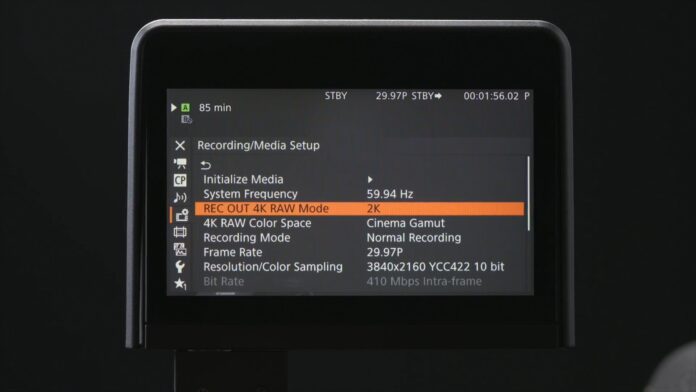
The Canon C300 Mark II’s 4K RAW output capability is a game-changer for many filmmakers, as it enables them to capture incredibly detailed and high-resolution footage. By recording in RAW format, the camera preserves all the sensor data, allowing for maximum flexibility in post-production. This is particularly beneficial for color grading, visual effects, and other adjustments that can enhance the final look of the footage.
The 4K RAW output is delivered through a single 3G/6G SDI or HDMI connection, which simplifies the setup and reduces the need for additional equipment. This is a significant advantage for filmmakers who want to maintain a lightweight and portable rig, especially when shooting on location or in tight spaces.
The camera’s ability to record 4K RAW at up to 60 fps offers more creative possibilities, such as capturing fast-paced action or creating stunning slow-motion sequences. The higher frame rates combined with the RAW format result in smoother footage and greater detail, ensuring that even the most challenging scenes are captured with precision.
Enhanced Usability and Adjustability for a Better Shooting Experience
One of the primary goals of the Canon C300 Mark II’s design was to enhance usability and adjustability, making it a more versatile and user-friendly camera for filmmakers. The fully adjustable screen is a significant improvement over the original C300, as it allows users to change its position and angle according to their shooting requirements. This flexibility is particularly useful when filming at low or high angles or when the camera is mounted on a rig or crane.
The addition of a joystick for focus control has a considerable impact on the overall user experience, especially for solo operators who need to manage multiple aspects of the shoot simultaneously. The joystick simplifies the process of adjusting focus and ensures that the subject remains sharp and in focus during filming. This feature reduces the need for additional crew members to assist with focus pulling, making it more convenient for smaller production teams or independent filmmakers.
Moreover, the built-in wireless functionality allows for remote control of the camera, giving filmmakers even more flexibility in how they operate the C300 Mark II. This feature can be particularly beneficial when the camera is mounted on a gimbal or other stabilizing devices that may limit direct access to the camera’s controls.
High Frame Rates and Sub-Sampling Options
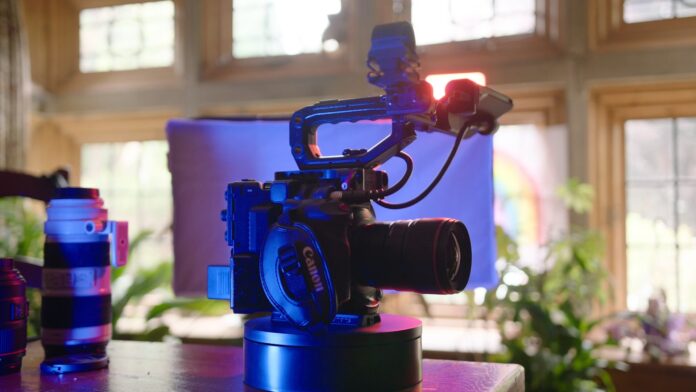
The Canon C300 Mark II offers a variety of frame rates and sub-sampling options, providing filmmakers with more creative freedom. The camera can record DCI 4K at up to 60 fps, Ultra HD at up to 120 fps, and full HD at up to 180 fps. The sub-sampling of UHD 4:2:2 footage allows for the best possible image quality, even when bandwidth isn’t sufficient for uncompressed video. These options enable filmmakers to capture stunning slow-motion sequences and maintain excellent image quality throughout their projects.
Lens Compatibility and Interchangeable Mounts
One of the standout features of the Canon C300 Mark II is its lens compatibility and support for interchangeable mounts. These features provide filmmakers with a greater degree of flexibility when choosing lenses for their projects, enabling them to achieve the specific look and feel they desire.
The C300 Mark II comes with an EF mount, which is a popular and widely used lens mount in the Canon ecosystem. This compatibility allows filmmakers to take advantage of the vast range of EF lenses available in the market, including primes, zooms, and specialty lenses. Many filmmakers already own or have access to EF lenses, making the C300 Mark II an attractive option for those looking to maintain compatibility with their existing lens collection.
In addition to the EF mount, the camera also supports PL mount lenses, which are commonly used in professional cinema productions. The ability to switch between EF and PL mounts during production offers even greater flexibility, as it allows filmmakers to choose from an even broader range of lenses to suit their creative needs. This feature is particularly valuable for those working on high-end productions that may require specialized PL lenses for certain shots or scenes.
The interchangeable mount system of the C300 Mark II is designed to be user-friendly, making it relatively simple for filmmakers to switch between EF and PL mounts as needed. This adaptability ensures that the camera can be easily tailored to various production requirements, ultimately contributing to a more versatile and customizable shooting experience.
- 12 stops of Dynamic range with Canon Log 2 Gamma (14+stops with Canon Log Gamma, Wide DR Mode)
- Dual Pixel Auto Focus for super smooth rack focusing and video auto-focus features
- 5.2K RAW Recording up to 30 FPS with external recording device (Atomos Shogun)
- 4K RAW internal recording at 24 FPS max speed on CFast Cards
- Excellent Image Quality from same sensor as Canon 1D X DSLR camera
- EF lens mount is a huge plus for many shooters because of the many accessories already available for this type of mount
- Banding occurs in shadows on internal 4K RAW Recorder when shooting over cranked ISO speeds
- External Raw Recorder (Atomos Shogun) works best with 60p and lower frame rates
- External Recorder is needed to get the full 10 stops of DR
- No built in ND filters for shooting outdoors during very bright days
- Rolling shutter can become quite heavy when using CMOS readout and shooting over cranked frame rates
- When C-Log is used, image looks flat and washed out due to limited Dynamic range
- Lack of good codec choices for internal 4K RAW Recording: only 422 HQ at 150 Mbps (to be updated via Firmware).
- It’s a bit on the pricey side. For what you’re getting, this isn’t an inexpensive camera by any means
FAQ
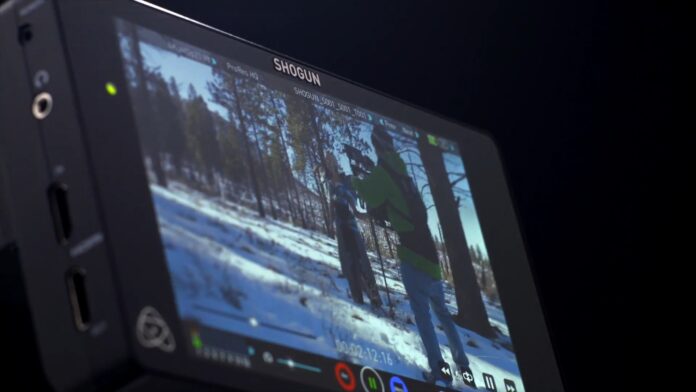
What types of projects is the Canon C300 Mark II best suited for?
The Canon C300 Mark II is a versatile camera that can be used for various types of projects, such as feature films, documentaries, commercials, music videos, and event coverage. Its 4K RAW output, high dynamic range, and interchangeable lens mounts make it an excellent choice for professional cinematographers, while its usability features and adjustability appeal to independent filmmakers and smaller production teams.
How does the C300 Mark II perform in low-light situations?
The Canon C300 Mark II delivers impressive low-light performance, thanks to its high dynamic range and advanced sensor technology. The camera’s Canon Log 2 Gamma and Canon Log 3 Gamma profiles enable it to capture rich colors and details even in challenging lighting conditions. With a wide ISO range and dual-gain output, the camera can produce clean images with minimal noise even at higher ISO settings.
Can I use my existing Canon EF lenses with the C300 Mark II?
Yes, the Canon C300 Mark II comes with an EF mount, which means you can use your existing Canon EF lenses without any issues. Additionally, the camera supports PL mount lenses and has an interchangeable mount system, allowing you to switch between EF and PL mounts as needed during production.
Is the C300 Mark II suitable for one-person operation or smaller teams?
The C300 Mark II is designed with usability and adjustability in mind, making it an excellent choice for solo operators or smaller production teams. The camera features a fully adjustable screen, a joystick for focus control, and built-in wireless functionality, all of which contribute to a more user-friendly shooting experience. These features enable filmmakers to manage various aspects of the shoot independently, reducing the need for additional crew members.
Can I upgrade my original C300 to the C300 Mark II?
Upgrading from the original C300 to the C300 Mark II requires purchasing the new camera, as they are separate models with distinct features and improvements. The C300 Mark II offers several significant upgrades over its predecessor, such as 4K RAW output, higher dynamic range, improved usability, and interchangeable lens mounts. If you find that these features align with your production needs, investing in the C300 Mark II could be a worthwhile decision.
What kind of storage media does the Canon C300 Mark II use?
The Canon C300 Mark II uses CFast 2.0 cards for recording 4K RAW footage internally. CFast cards offer high-speed data transfer rates, allowing the camera to capture high-resolution footage without compromising performance. Additionally, the camera has an SD card slot for recording lower-resolution proxy files and saving camera settings.
Does the Canon C300 Mark II have built-in ND filters?
Yes, the Canon C300 Mark II features built-in ND (Neutral Density) filters that can be engaged to control exposure when shooting in bright conditions. The camera offers four different ND settings (2, 4, 6, and 8 stops), providing you with a range of options for managing exposure and depth of field while maintaining image quality.
Conclusion
Overall, Canon’s C300 mark II is an outstanding professional digital cinema camera with excellent internal codecs, great low-light capabilities and improved battery life so you can keep shooting all day long without needing lengthy breaks or requiring expensive batteries that can break down on set.
Its predecessor was already one of the best cameras on the market but this new model has taken it several steps
If you’re a professional videographer and have the budget for this product, you will not be disappointed. The image quality it produces is outstanding, Dynamic Range is incredible even at low ISOs due to Canon Log 2 Gamma, and ergonomically speaking this camera is built like a tank!
It’s compact and easy to use which makes transport extremely convenient. If you don’t already own the original c300 mark i, we highly recommend picking up mark ii if it fits your production needs.




